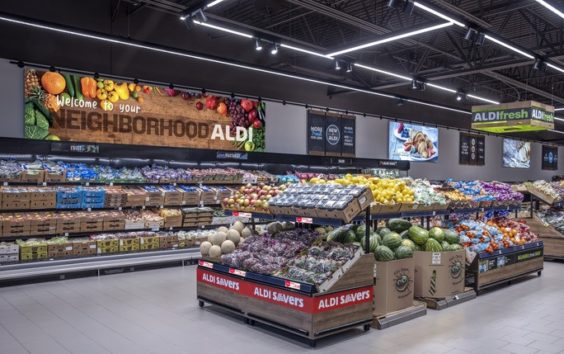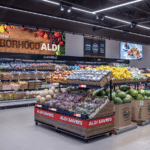
Whether you love it or hate it, many of us will find ourselves in a Walmart at some point. You might be willing to put up with the crowds, the cavernous stores and the cashiers who question your coupons in order to save some money on your groceries. But would you consider visiting Walmart to be a fun way to spend an afternoon?
Maybe, or maybe not. But it turns out that saving money, and having fun doing it, don’t have to be mutually exclusive.
ALDI has been proclaimed as being easier to navigate and a faster, more fun place to buy groceries than Walmart. That’s according to a survey commissioned by – brace yourself – ALDI itself.
So it’s a good thing those survey results were in ALDI’s favor.
The survey, conducted by Kantar on behalf of ALDI, found that 77% of ALDI shoppers said the store is “simpler to shop” than other grocery stores. Nine out of ten ALDI shoppers said the store was “more cost-effective” than other grocery stores. And when compared head-to-head with Walmart, shoppers found shopping at ALDI to be “more fun.”
Kantar also assigned hundreds of shoppers to buy 30 of the most commonly purchased grocery items at ALDI, and again at Walmart or Kroger, and timed them. They found that it is “at least 20% faster” to shop at ALDI than at its larger competitors.
“Every inch of an ALDI store is intentionally designed to provide a more streamlined experience, offering shoppers exactly what they need, nothing more and nothing less,” ALDI said in announcing the survey’s findings. “Unlike traditional grocery stores that offer endless product options, such as half an aisle of olive oil, ALDI only sells the most popular varieties in the most popular sizes so customers can be confident in their purchase.”
A recent Inmar report found that when it comes to groceries, bigger is no longer necessarily better. Inmar found that traditional grocery stores’ overall share of the grocery market is down to just 44%, a sharp contrast from the 90% they commanded a generation ago. Much of that grocery business is heading to limited assortment stores like ALDI and Lidl, which Inmar projects will grow their market share by 5.6% each year through 2023.
Traditional grocery stores have tried fighting back, by lowering prices to match the discounters’, and by focusing on promotions like weekly specials and buy-one-get-one-free deals that the everyday-low-price discounters can’t match. Other big chains like Target, Meijer and Publix have been opening their own smaller-format, ALDI-like versions of their flagship stores, especially in urban areas, acknowledging that not all of their shoppers need half an aisle of olive oils to choose from.
ALDI and its newer U.S. competitor Lidl are in the process of opening more and more stores, so the pressure they’re putting on the big grocery players isn’t easing up. Lidl is on pace to have about 100 stores by next year, while ALDI already has about 1,900 stores in 36 states, with plans to open hundreds more. As it introduces more shoppers to the ALDI way, the retailer no doubt hopes that future surveys, and future ALDI customers, will agree that shopping and saving money has never been more fun.
Image source: ALDI











Pingback: Aldi "more fun to shop" says Aldi survey - deranged.mederanged.me